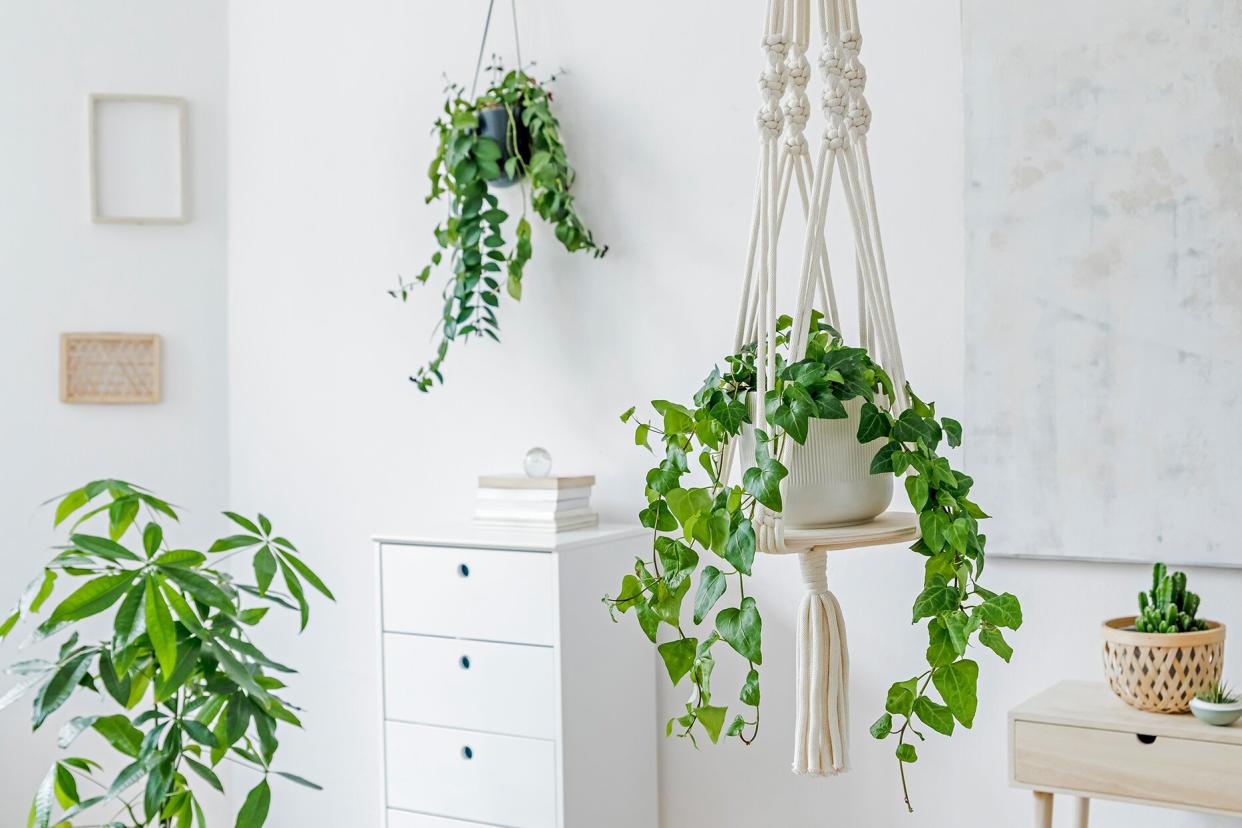How to Get Rid of Common Houseplant Bugs, According to Experts

Getty Images
TABLE OF CONTENTS
On This Page
Aphid
Mealybug
Whitefly
Spider Mite
Scale Insects
In addition to the very welcome benefit of purifying the air in your home, your houseplants give every room a bit of life and fresh color. However, these green beauties also tend to be as attractive to pests as they are to you, which can be a major problem for the plants' appearance, growth, and overall health. To help keep your greenery in the best possible condition, we outlined the five most common houseplant pests—as well as the best tips for getting rid of them.
Related: 10 Houseplants That Will Beautify Your Home
Aphid
These tiny houseplant pests have soft green, yellow, brown, red, or black bodies, and they typically linger on the underside of leaves, feeding on sap. Because of their diet, aphids excrete a sugary secretion called honeydew, explains Daniel Scott, associate director for horticulture at the American Horticultural Society. Honeydew often promotes a black sooty mold that grows on the surface of the plant. "It does not infect the plant tissue," Scott says, "but a heavy coating can inhibit photosynthesis and not allow light to penetrate the leaves." Large infestations can lead to stunted plant growth and distorted, discolored foliage. They're especially common in succulents.
To get rid of aphids, wipe or spray infested leaves with a solution of water and a few drops of dishwashing detergent, or enlist the help of natural aphid predators, like ladybugs or lacewing. For plants that are heavily infested, carefully pinch off the stem to remove pests from the plant. Because aphids are attracted to moist soil and high nitrogen levels, it's a good idea to avoid overwatering and over-fertilizing your houseplants in order to prevent another aphid infestation once you've alleviated your problem.
Mealybug
These small, wingless insects, which have a white appearance when grouped together, can usually be found on plant stems, leaves, and nodes (the area where leaves meet the stem). "Mealybugs are attracted to excessive succulent growth, which can occur as a result of overwatering and over-fertilization, especially with fertilizers high in nitrogen," Scott says. As they feed on the sap of plants, leaves tend to curl and turn slightly yellow, and plant growth becomes stunted.
You can get rid of the pesky insects by dabbing them lightly with a cotton swab dipped in 70 percent isopropyl alcohol (avoid touching delicate leaves) or spraying with a dish-detergent and water mixture (one teaspoon of soap to one gallon of water). Neem oil, horticultural oil, and insecticidal soap are effective against mealybugs, too. To prevent outbreaks, "follow a strategic fertilizer regimen as opposed to indiscriminate feeding," Scott says. If caught early, mealybugs can simply be wiped away with your bare hands.
Whitefly
Moth-like whiteflies typically congregate in groups on the underside of leaves, sucking on the sap of houseplants and causing stunted growth, yellowing, and poor plant health. The houseplant pests are also largely linked to the transmission of plant viruses. To detect and control whitefly populations, use yellow sticky traps, but beware: "Sticky traps are indiscriminate and will also capture beneficial insects, as well as loose articles of clothing," Scott says. One trap per room should be adequate. You can also use a diluted neem oil mixture (one ounce of oil per gallon of water), insecticidal soap, or horticultural oil.
Spider Mite
Technically arachnids as opposed to insects, spider mites are super small, reddish pests that collect on the bottom of leaves, where they feed on plant fluids, leaving small dots behind with each feeding. Especially common in plants like English ivy, spider mites can cause plant leaves to yellow, dry up, and fall off. Webbing on leaves is also a common sign of spider mite damage.
The easiest and gentlest way to address the infestation is to simply hose down the plant with lukewarm water, says Scott. Use a sprayer on small plants. "Because spider mites prefer high temperatures and low humidity, you may be able to manipulate the environment around your plants to discourage the infestation," he says. "Regularly misting the leaves of your plants with a spray bottle will help to increase the humidity."
Scale Insects
Scale insects are small, sap-loving bugs that attach to a plant's stems, branches, and leaves. Some have a hard shell, others a soft shell; both can threaten a plant's vigor or cause yellow or wilted leaves. They're often difficult to detect because their coloring is similar to that of a plant.
When infestation is light, use your hand or an old toothbrush to rub off these houseplant pests or use a cotton swab soaked in 70 percent isopropyl alcohol. Horticultural oil and insecticidal oil work too. Prune infested plant stems as soon as possible to avoid a recurrence of bugs.

